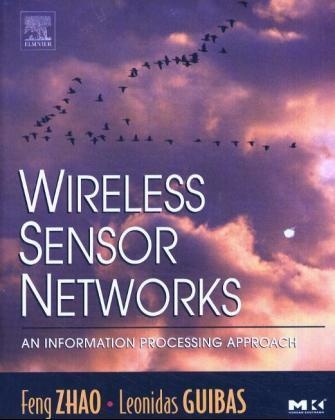Ulteriori informazioni
Informationen zum Autor Feng Zhao is a senior researcher at Microsoft! where he manages the Networked Embedded Computing Group. He received his Ph.D. in Electrical Engineering and Computer Science from MIT and has taught at at Stanford University and Ohio State University. Dr. Zhao was a principal scientist at Xerox PARC and directed PARC's sensor network research effort. He is serving as the Editor-In-Chief of ACM Transactions on Sensor Networks. Professor Guibas heads the Geometric Computation group in the Computer Science Department of Stanford University! where he works on algorithms for sensing! modeling! reasoning about! rendering! and acting on the physical world. He is well-known for his work in computational geometry! computer graphics! and discrete algorithms. Professor Guibas obtained his Ph.D. from Stanford! has worked at PARC! MIT! and DEC/SRC! and was recently elected an ACM Fellow. Zusammenfassung Introduces practitioners to the fundamental issues and technology constraints concerning various aspects of sensor networks such as information organization! querying! routing! and self-organization using concrete examples and does so by using concrete examples from current research and implementation efforts. Inhaltsverzeichnis Ch 1 Intro. Ch 2 Canonical Problem: Localization and Tracking Ch 3 Networking Sensor Networks Ch 4 Synchronization and Localization Ch 5 Sensor Tasking and Control Ch 6 Sensor Network Database Ch 7 Sensor Network Platforms and Tools Ch 8 Application and Future Direction
Sommario
Canonical problem: localization and tracking
Networking sensor networks
Synchronization and localization
Sensor tasking and control
Sensor network database
Sensor network platforms and tools
Application and future direction
Relazione
"Wireless sensor and actuator nets, also known as motes and smart dust, are an emerging computer class based on a new platform, networking structure, and interface that enable novel, low cost, high volume, applications. This text and reference is a critical link to create this new class by covering the field of study for both practitioners and researchers. Unlike earlier computer classes that have been mostly evolutionary, motes require the "tall, thin man” that Carver Mead used to describe custom VLSI design. Motes system research and development require, deep knowledge of radio links, networks, operating systems, each application, and their interaction. Zhao and Guibas provide an excellent foundation for embarking on understanding and building these new systems." --Gordon Bell, Senior Researcher, Microsoft Corporation
"This book provides both an insightful overview of the emerging field of wireless sensor networks, and an in depth treatment of algorithmic signal and information processing issues. An excellent text for both professionals and students!" --Deborah Estrin, Center for Embedded Networked Sensing, UCLA

